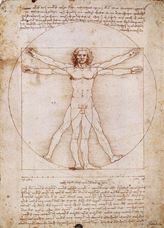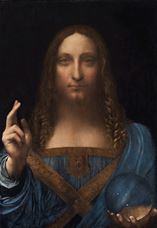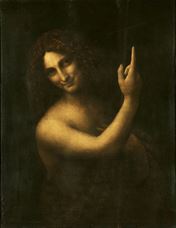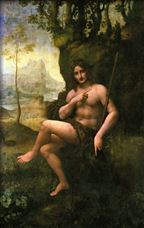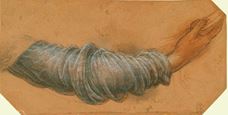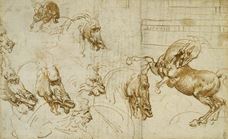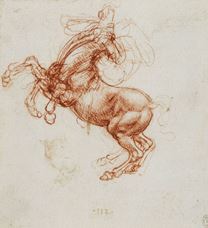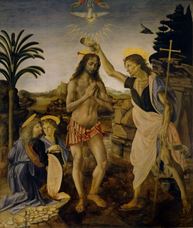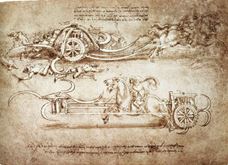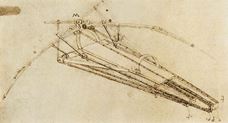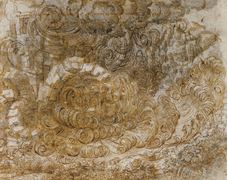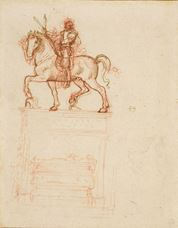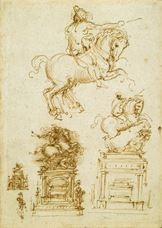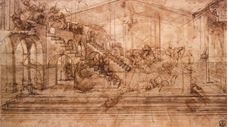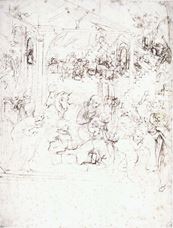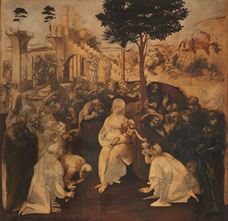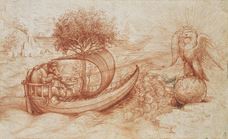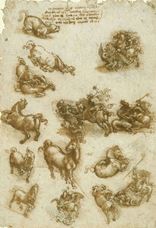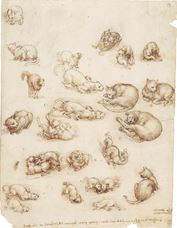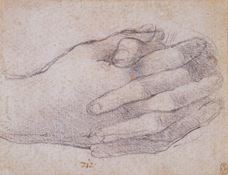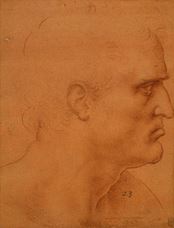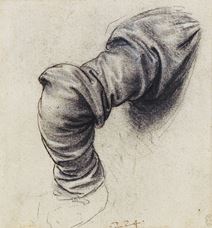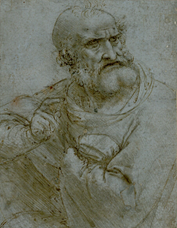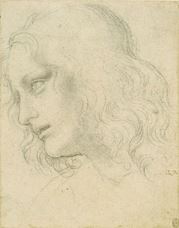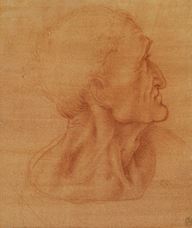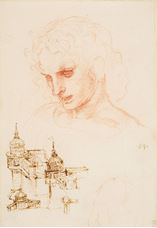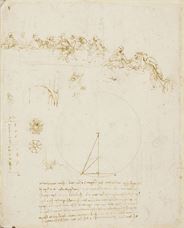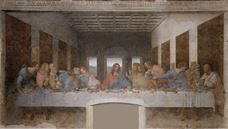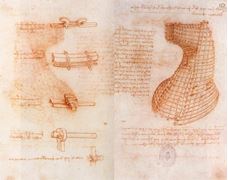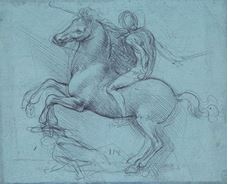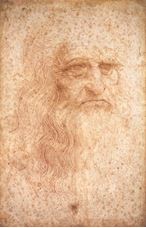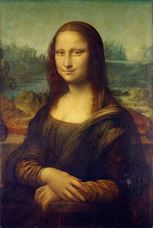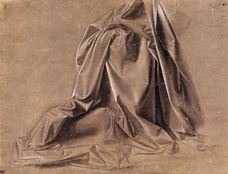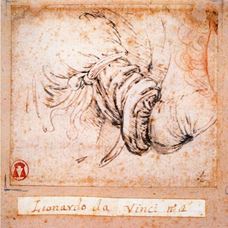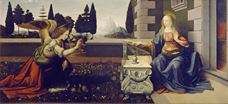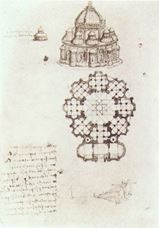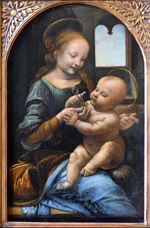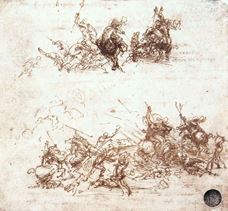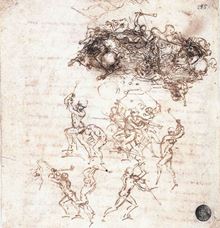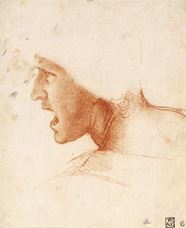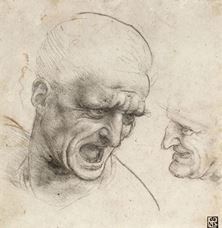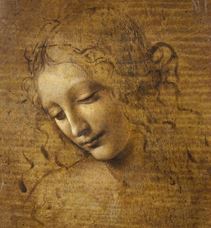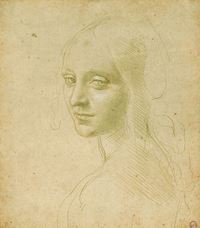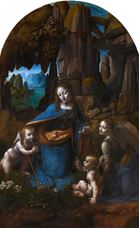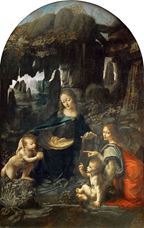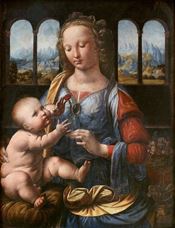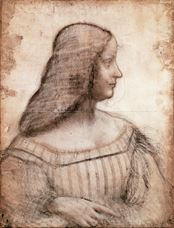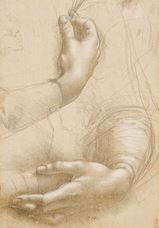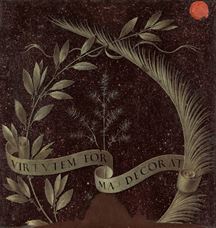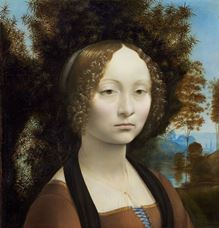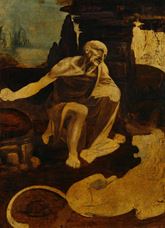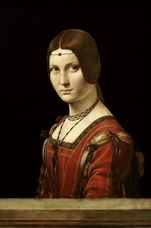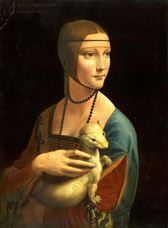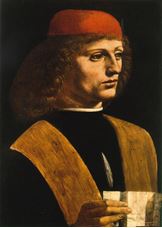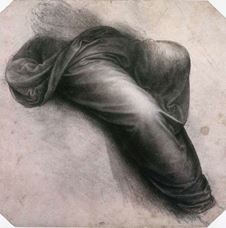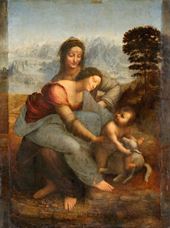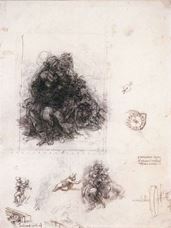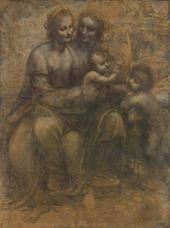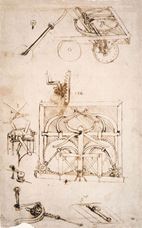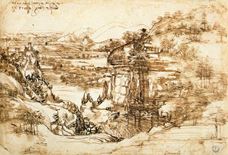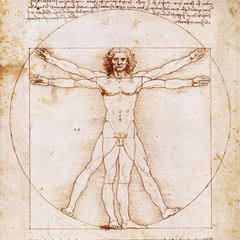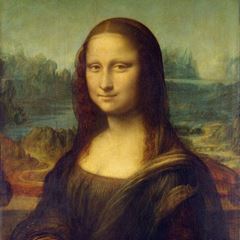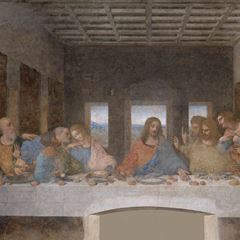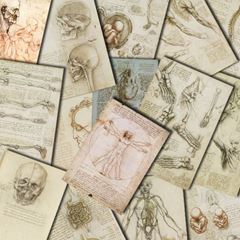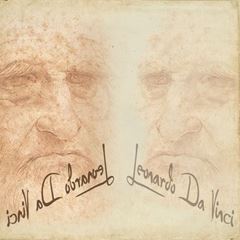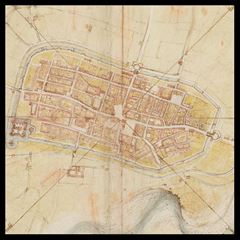In the 1480s, Leonard Da Vinci has made considerable scientific drawings. In the late 1480s, for the first time, he made extensive studies on the proportions of the human body, anatomy, and physiology. Leonardo's first true anatomical work dates back to Milano. The study of the dimensions of the human skull and brain ventricles coincides with this period.
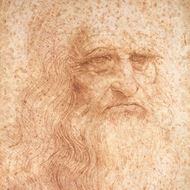
Leonardo da Vinci
Leonardo da Vinci was born on April 15, 1452, in Vinci, a small town near Florence in Italy. His father was Ser Piero da Vinci and Mother Caterina. His father was Ser Piero da Vinci Notary, his mother was a peasant girl. Leonardo was born out of wedlock. His drawings, drawing from an early age, attracted his father's attention. There is little known about Leonardo's early period. He is thought that he lived with his mother until the age of five. Then it is thought that he lived with his father, who had another marriage.
Leonardo moved to Florence in 1466 with his father. His drawings, drawing from an early age, attracted his father's attention. He presented his son's drawings to Andrea del Verrocchio, one of the Florentine painters, and he was apprenticed to Leonardo Verrocchio's workshop as an apprentice. He gained experience in a wide range of subjects from sculpture, painting, architecture, optical theories and perspective to geometry, natural sciences and music under the supervision of Verrocchio, a specialist in many fields, from jewelry to sculpture.
Leonardo was accepted to the Florentine Painters and Sculptors Guild in 1472. This meant that Leonardo could get independent orders for the painter and sculptor. But Leonardo stayed with Verrocchio until 1476. During this period, Leonardo's master, Verrocchio, "The Baptism of Christ" on the order came. As the assistant of Leonardo's master, he made one of his first works with paints. Leonardo made an angel paint holding in his hand a few pieces of clothes to the left of the painting. After this angel figure, it is said that Verrocchio stopped painting because of Leonardo's ability.
Although Leonardo often worked with the workshop models, he worked on nature in his works. The first known pattern and sketch work were the "Arno Valley Landscape" of 1473. He gave clues to the authenticity of the way he described nature. However, the "Annunciation" dated 1475 has become the signature of mastering this field.
In 1478, Leonardo took his first important job to decorate the altar board of the San Bernardo Chapel in the Palazzo Vecchio in Florence. But Leonardo did not complete this picture. In 1480, he received an official order of a medium-sized altar depicting "Saint Jerome in the Wilderness". In 1481, he received an order for the San Donato Monastery in Scopeto with the theme "The Adoration of the Magi". But like many of his works, Leonardo was unfinished in these works.
In 1482 he went to Milan for a new beginning by saying goodbye to his master Verocchio and the Florence Painters Ensemble of which he was a member. There were two reasons he wanted to go to Milan. The first reason was that Leonardo's own designed musical instrument wanted to give Lorenzo de'Medici's gift to the Duke of Milan, Ludovico Sforza. This musical instrument was a horse-headed lyre. The other reason was that while in Florence, the Dukes of Milan had been preparing a large monument project. Ludovico Sforza, in honor of his father Francesco Sforza, was planning to build a giant monumental an equestrian sculpture. In his letter of application to the Milan Palace, Leonardo had reserved a special place for this project. In this letter, he emphasized his military engineering skills. But his first work in Milan was the "Virgin of the Rocks" painting, which would form the middle section of a large altar board for the chapel of San Francesco Grande Church, dated 1483.
At Leonardo Milano, he designed costumes for the Sforza family's ceremonies and the city festivals. He also worked as a military engineer and architect.
The mid-1480s were the years when Leonardo made considerable scientific drawings. In addition to his technical, scientific and artistic drawings, he performed amazing works with strong intensity. Leonardo designed military devices and machines. He made flying machines and similar designs in Milan, where he spent seventeen years. In the late 1480s, for the first time, he made extensive studies on the proportions of the human body, anatomy, and physiology. Ludovico il Moro has assigned workshops for Leonardo's paintings and technological discoveries. Leonardo also had students who would teach the whole composition style. Only one student took a special place among the students he took with Leonardo. His real name was Gian Giacomo Caprotti. This ten-year-old student is known as Salai.
Leonardo also began taking notes from his thoughts in every field during his time in Milan. Handwritten notes with sketches and tiny points were thousands of pages. In his drawings and inscriptions, he used his left hand in the mirror symmetry from left to right. Leonardo's notebooks included information about nature observations, technical and artistic drawings, personal notes, accounts, addresses, interests, and contacts.
Ludovico il Moro brings on the agenda his equestrian sculpture project, a symbol of the power of his dynasty, in honor of his father. Sforza was asked to do this monument, which was planned to be of giant size, from Leonardo. In 1493, a gypsum model of this bronze equestrian statue was exhibited in the courtyard of the Sforza Palace. Due to the technical difficulties of bronze casting, this design could not go beyond the model stage. In 1495, upon the order of Ludovico il Moro, Leonardo began the fresco of "The Last Supper" on the dining hall of the Monastery of Santa Maria delle Grazie.
The French led by XII Louis put an end to Ludovico Sforza's rule in 1499. For Leonardo, Ludovico il Moro's loss of power was the end of Milan's years. He spent time in various cities on his way back to Florence. Leonardo wrote a letter to II Bayezid, the son of Fatih Sultan Mehmet, the new sultan of the Ottoman Empire. He stated that he wanted to serve as a military engineer and build a bridge over the Golden Horn. Leonardo sent the drawing of the bridge to the Ottoman Sultan. But the Ottoman sultan did not accept the project.
Leonardo head to a different area in 1502. In addition to General Cesare Borgia, he started to work as a chief military architect and engineer. In next to General Cesare Borgia, he began working as the chief military architect and engineer. Together with General, he traveled around Tuscany and Umbria in Central Italy. He made topography drawings for military strategy.
Leonardo returned to Florence in 1503. After the order of Francesco del Giocondo in Florence, he started a portrait of his wife, Lisa del Giocondo (Mona Lisa). At the same time, he met Michelangelo Buonarroti and Raffaello, the two great artists of his time. Raffaello was fascinated by Leonardo's painting Mona Lisa and even worked on it. There was a struggle between Leonardo and Michelangelo. The management of Florence decided to equip the building of the big building of the government building, Palazzo Vecchio. They wanted to have wall paintings on the history of the city. The management of Florence asked Leonardo for painting with the theme "The Battle of Anghiari". Michelangelo's "The Battle of Cascina" was officially ordered. These two wall paintings were to be exhibited side by side. However, both images could not be finished.
Leonardo left Florence in 1506 and returned to Milan. In addition to his brief visits to Florence, he worked in Milan for Charles D’Amboise, the city's French director. In 1508, he made the second version of "Virgin of the Rocks" with some changes. He was making ornament designs for the ceremonies held in Milan's French palace and continued his architectural work.
In the second period of Milano, the anatomical drawings of Leonardo were taken in front of his paintings. He was beginning to devote more time to anatomy. In contrast to the first anatomical drawings of the Milano period, the human body and the cut and fragmented organs were included. Francesco Melzi, a member of a landowning family from Milan, entered the artist's studio as a student. Melzi would be one of Leonardo's closest friends.
Frenchman Charles d'Amboise, the patron of Leonardo, died in 1511. With the French withdrawal from Milan in 1512, Leonardo went to Rome to accept the guardianship of Papa X Leo's brother Giuliano. He started working for Guiliano de'Medici at the Vatican Palace. "St. John the Baptist" was the last and only picture of Leonardo ever made from the Roman period.
In 1516, his patron Giuliano died. In 1517, upon the invitation of King Francis I of France, he moved to France as a court painter. Together with Francesco Melzi and Salai, he moved to Cloux Castle in Amboise. He would spend the last years of his life at Cloux Castle. Leonardo worked as the chief painter, engineer, and architect of the king. Although the paralysis affected his right side, he continued to work. He wasn't painting, he left his art work to Melzi, his student. Although Leonardo did not use the brush very much, he focused on drawing. He filled his notebooks with patterns. He began drawing on the deluge, drawing unreal remarks in strange movements. He started drawing on the flood. He was drawing unreal descriptions.
As a result of his severe illness in 1518, Leonardo da Vinci fell into bed. On May 2, 1519, at the age of 67, he died in Cloux Castle.
Bibliography;
Vasari, G., (2013). Sanatçıların Hayat Hikayeleri, Birinci Baskı, Sel Yayıncılık, İstanbul.
Zöllner, F., (2005). Leonardo, Birinci Basım, Taschen/Remzi Kitabevi, İstanbul.
Buchholz, E.L., (2005). Leonardo da Vinci, Literatür Yayıncılık, İstanbul.
Yetkin, S.K., (2007). Büyük Ressamlar, Birinci Baskı, Palme Yayıncılık, Ankara.
Lunday, E., (2013). Büyük Sanatçıların Gizli Hayatları, Beşinci Baskı, Domingo Yayınevi, İstanbul.
Erdoğan, C.E., (2015). Sanatın Büyük Ustaları Leonardo da Vinci, Birinci Baskı, Hayalperest Yayınevi, İstanbul.
Gombrich, E.H., (2002). Sanatın Öyküsü, Üçüncü Baskı, Remzi Kitabevi, İstanbul.
Altuna, S., (2013). Ünlü Ressamlar Hayatları ve Eserleri, Birinci Baskı, Hayalperest Yayınevi, İstanbul.
Ed:Pescio, C., (2014). Leonardo da Vinci Sanat ve Bilim, Birinci Baskı, Boyut Yayın Grubu, İstanbul.
Nicholl, C., (2012). Aklın Uçuşları Leonardo da Vinci, İkinci Baskı, Everest Yayınları, İstanbul.
Vezzosi, A., (2004). Leonardo da Vinci Evren Bilimi ve Sanatı, İkinci Baskı, Yapı Kredi Yayınları, İstanbul.
1452 He was born in Vinci, Italy on April 15th.
1466 He moved to Florence with his father. He started to work as an apprentice at the workshop of painter and sculptor Andrea del Verrocchio.
1472-75 He was accepted to the guild of painters in Florence. He added an angel figure to the painting of "The Baptism of Christ", which was ordered to Verrocchio. The oldest surviving monument of its kind has completed it's "The Arno Valley Landscape".
1478 He was given the official job of the altar for the San Bernardino Chapel in Vecchio Palace. But he couldn't complete it.
1478-80 He made "Portrait of Ginevra de' Benci" with the influence of Flemish masters.
1481 For the San Donato a Scopeto church, he received an official order on the altar "The Adoration of the Magi", which he could not complete. "Saint Jerome in the Wilderness" did not complete the picture of the altar.
1482 He went to Milan from Florence. He reported that as an artist and engineer he would serve Ludovico Sforza.
1483 He began the first version of the "The Virgin of the Rocks".
1487-88 He worked as a consultant architect at the Milan Cathedral workshop.
1489 He started the statue of Francesco Sforza on a horse, ordered by Ludovico Storza. He started working on a book on human anatomy.
1490-91 Known as Salai, he took ten-year-old Gian Giacomo Caprotti as an apprentice.
1493 A one-to-one scale model of the Sforza Horse was exhibited in the courtyard of the Sforza Castle.
1495-98 Upon the order of Ludovico Sforza, he painted the painting "The Last Supper" at the cafeteria of the Monastery of Santa Maria Delle Grazie in Milan.
1499 He left Milano. First, he painted a "Portrait of Isabella d'Este" in Mantova.
1500 He made a long trip to Florence via Venice. He drew a bridge project for Sultan II. Bayezid.
1502 He became the architect and military engineer of Cesare Borgia. Together, he traveled around Central and Western Italy, drawing maps and similar drawings.
1503 He returned to Florence. He started with the portrait of Francesco del Giocondo's wife (Mona Lisa). He received an order to depict the "The Battle of Anghiari" at Palazzo Vecchio.
1504 His father is dead.
1506 He returned to Milan under the French rule.
1508-12 He traveled briefly to Florence in 1508 and 1511. Later he stayed in Milan where he worked for the French director of the city Charles d’Amboise. He completed the second "Virgin of the Rocks" in 1508.
1513 After the death of Charles d'Amboise in 1511 and the withdrawal of the French from Milan in 1512, Leonardo went to Rome with his new protector and his brother Giuliano de' Medici, the brother of Pope X. Leo. A place has been set up in Belvedere in the Vatican.
1516 His protector Giuliano de' Medici is dead. Leonardo left Rome.
1517 On the invitation of King I. Francois of France, he went to France. Leonardo settled in Cloux castle in Amboise.
1519 He died at the age of 67 on May 2 in Amboise, and was buried in the church of the "St. Florentin Monastery".
The Vitruvian Man - Leonardo da Vinci
The measurements of Vitruvius were described many times after the Renaissance. But the most well-known of these paintings was Leonardo's.
Mona Lisa - Leonardo da Vinci
Various views have been made about the woman in the portrait, one of the most famous faces in the world. The name used today is based on Giorgio Vasari, a 16th-century art historian. Leonardo, According to Giorgio Vasari, the Florentine merchant Francesco del Giocondo depicts his wife. The most impressive thing in the table is the vitality in Lisa. The woman in the painting changes in front of our eyes as if she was a living being; every time we look at her, she looks different.
The Last Supper - Leonardo da Vinci
When evening came, Jesus was reclining at the table with the Twelve. And while they were eating, he said, “Truly I tell you, one of you will betray me.” They were very sad and began to say to him one after the other, “Surely you don’t mean me, Lord?” Jesus replied, “The one who has dipped his hand into the bowl with me will betray me. The Son of Man will go just as it is written about him.
Riddles / Prophecies - Leonardo da Vinci
Leonardo Da Vinci was an important architect, engineer, inventor, sculptor, writer, and painter of the Renaissance period. He was taking notes from his thoughts in every field. Sketches and notes filled with tiny fonts were thousands of pages. In addition to technical and artistic drawings, the notebooks included prophecies, riddles, and conventions on different topics.
Most Searched Painters on Google in 2020!
Social media and blogger named Gareth EVANS wanted to find out which artists were most searched on google in 2020 in the world during the pandemic process. EVANS showed the most popular artists searched by each country on the world map.
Maps - Leonardo da Vinci
In 1502, Leonardo da Vinci turned to a different task. He had begun to work as a chief military architect and engineer alongside General Cesare Borgia. For almost a year in Central Italy, he traveled around the Tuscan and Umbrian regions alongside the General, drawing up topography drawings for military strategy. In addition to the city plan of Imola, he has made other plans and maps...













